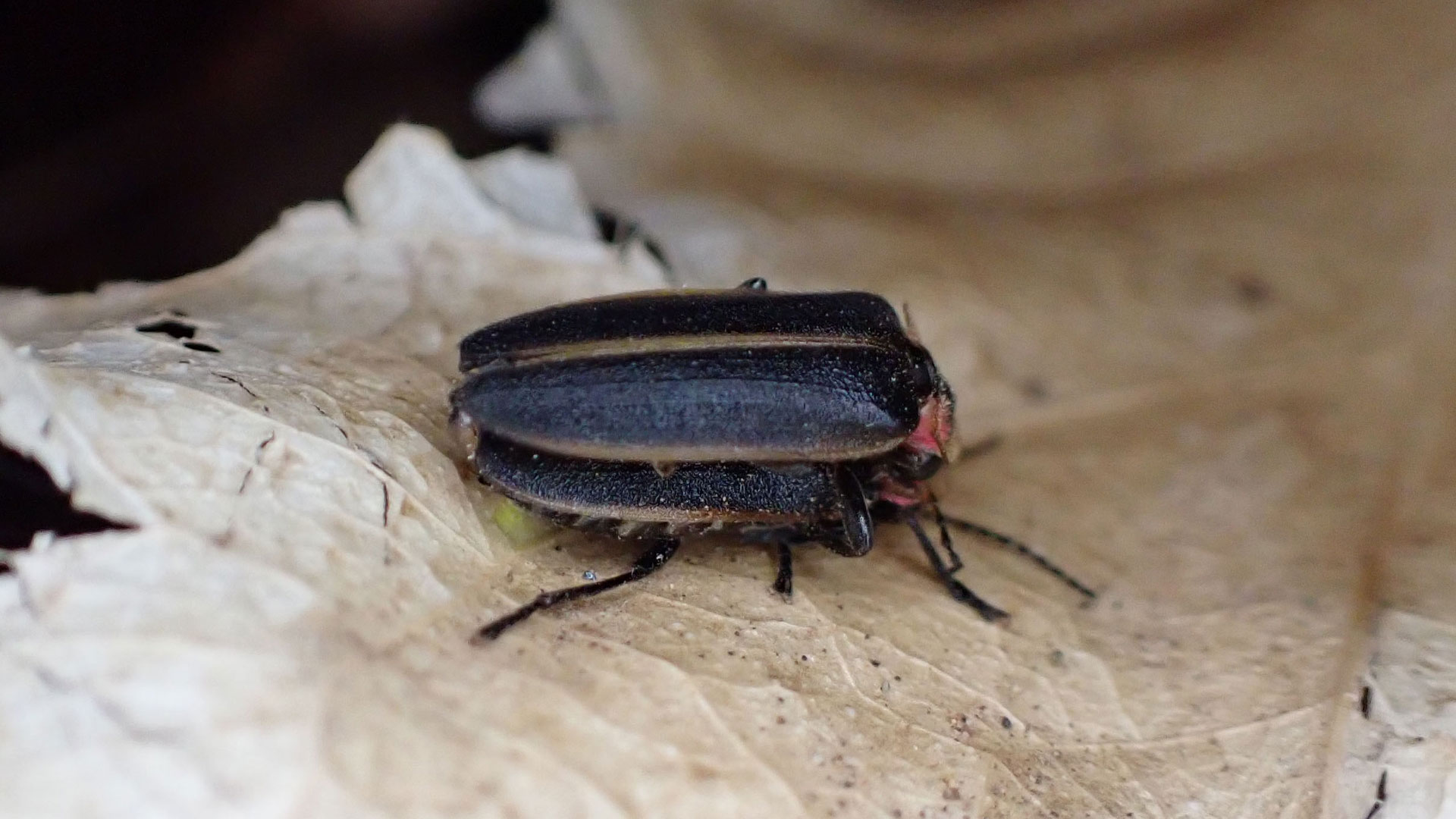 The Southwest Spring Fireflies in this photo are mating.
The Southwest Spring Fireflies in this photo are mating.
Scientists are fanning out over different parts of Arizona in hopes of learning more about some of the state's resident fireflies.
While typically associated with greener, wetter areas such as the Northeastern or Midwestern regions of the United States, some species can also be found in much drier Arizona.
Ron Day is a retired biologist from the Arizona Game and Fish Department who also worked for the Nature Conservancy.
"I grew up in northwestern Pennsylvania, where there were a lot of fireflies. And as a kid, I was just fascinated by them," Day says.
"Personally, when we moved out from Pennsylvania, I was 11 and I did not see a firefly in Arizona until I was 58."
Day is seeing more of them now, especially because he and fellow retired biologist Cheryl Mollohan are searching in various parts of Arizona for two of the state's more than 20 species.
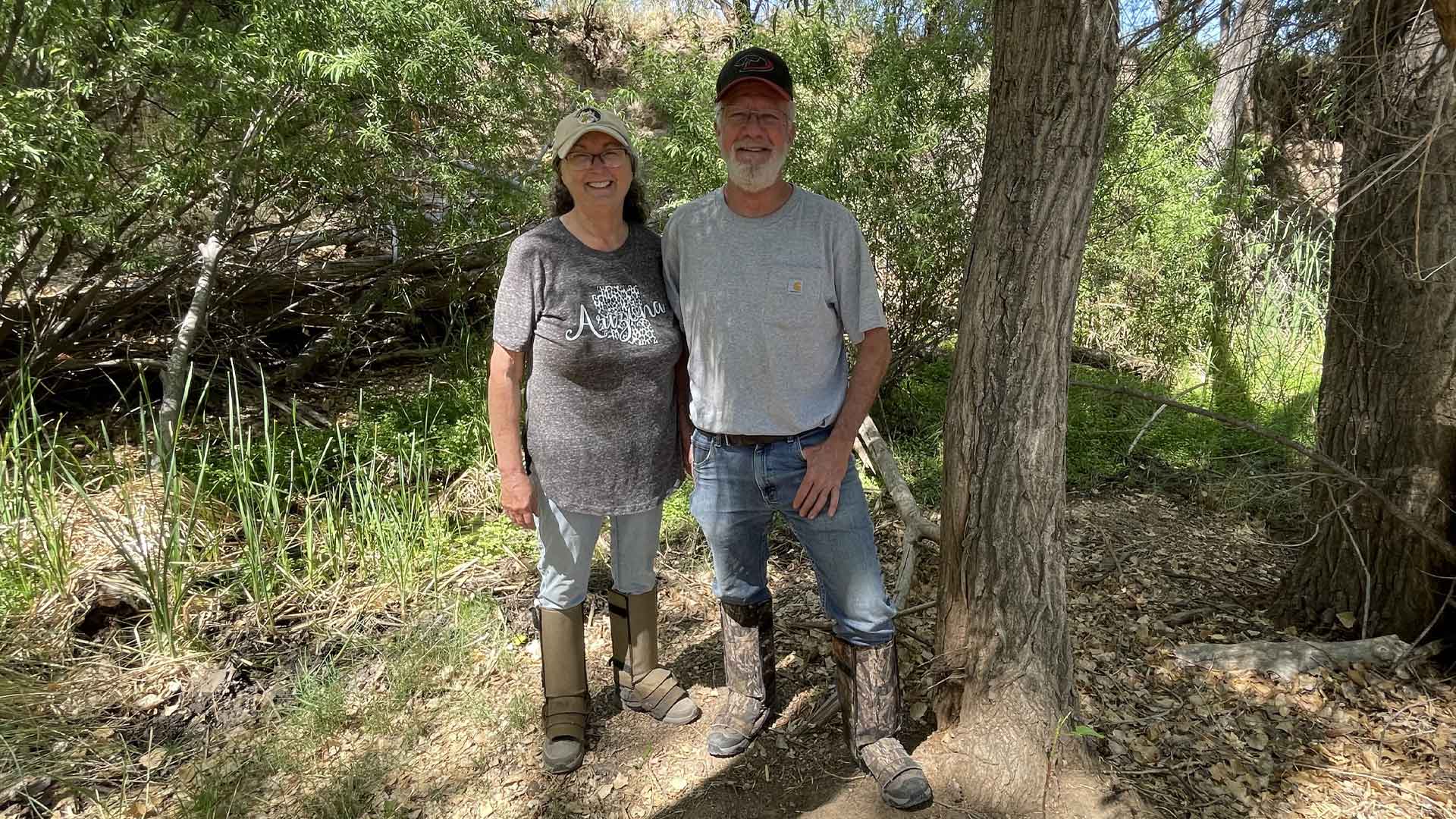 Cheryl Mollohan and Ron Day are retired scientists who are contributing to firefly studies in Arizona by volunteering throughout the state. Here, they are seen wearing "snake boots" to protect them while walking in the field.
Cheryl Mollohan and Ron Day are retired scientists who are contributing to firefly studies in Arizona by volunteering throughout the state. Here, they are seen wearing "snake boots" to protect them while walking in the field.
Mollohan and Day are focusing on the Southwest spring firefly (Bicellonycha wickershamorum) commonly called "BWs" and the Southwest synchronous firefly (Photinus knulli).
They visit riparian habitats- those with water such as marshes, rivers or ponds - that the insects need in order to complete their life cycles.
One of their stops in the state is a small area in Las Cienegas National Conservation Area, southeast of Tucson where fireflies find life-giving water.
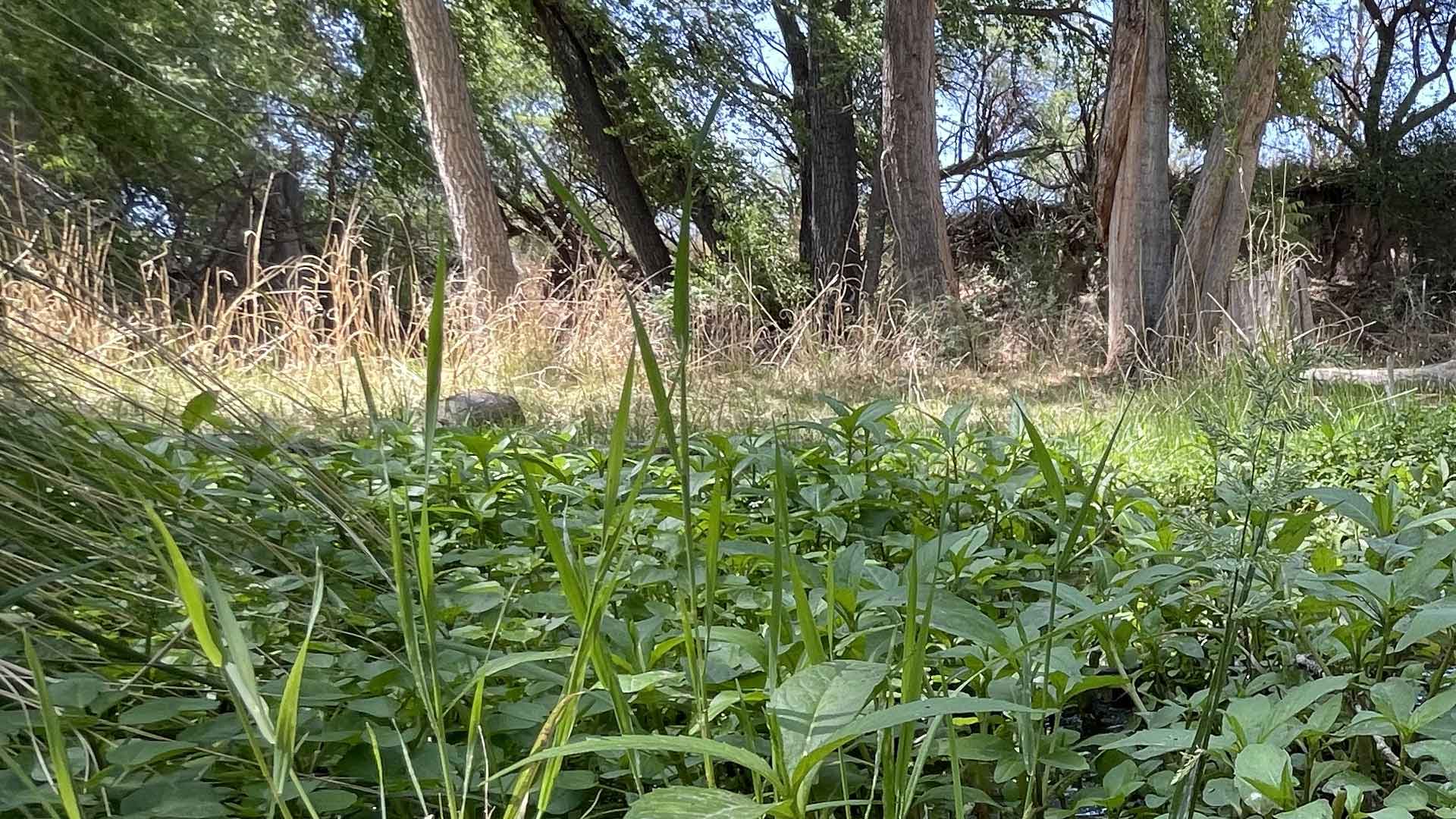 Fireflies need moist / riparian areas, which are increasingly endangered, in order to complete their life cycles. Scientists say protecting such habitats is good for many species of wildlife, including fireflies.
Fireflies need moist / riparian areas, which are increasingly endangered, in order to complete their life cycles. Scientists say protecting such habitats is good for many species of wildlife, including fireflies.
"This is a desert riparian environment with a cottonwood gallery forest. So we've got big gorgeous cottonwood trees, which used to be much more common and along our rivers in Arizona," Mollohan points out.
"It is the component that's important for the fireflies, a marshy, slow moving area. So the water is fairly slow-moving that lets it spread out and places for the firefly larva to live in the ground, basically in the wet ground."
While at Cienegas, they were setting out trail cameras that have been modified to be able to capture the flashes of fireflies.
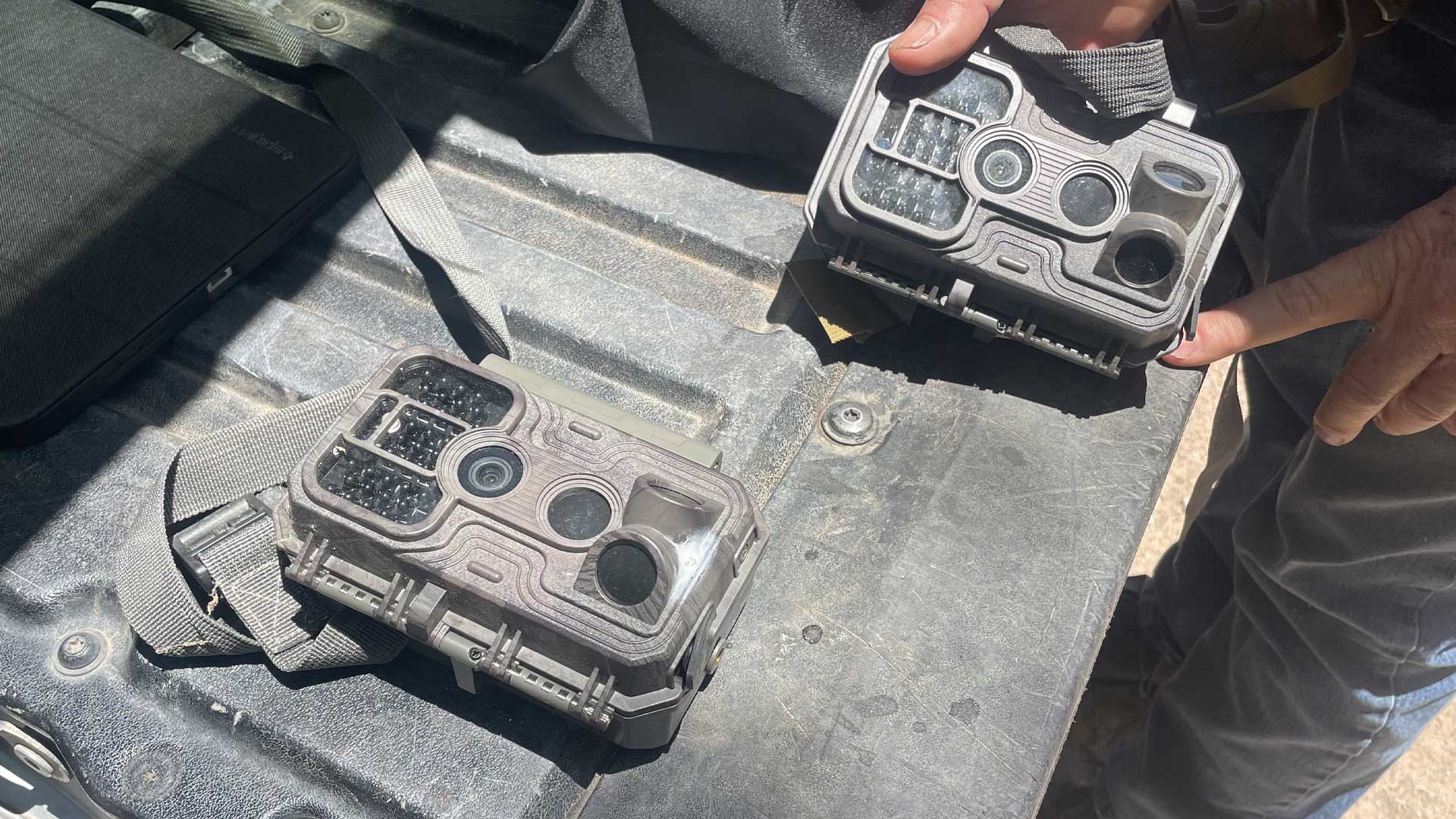 Ron Davis displays a couple of the cameras that are mounted in the field to capture images of fireflies in the dark.
Ron Davis displays a couple of the cameras that are mounted in the field to capture images of fireflies in the dark.
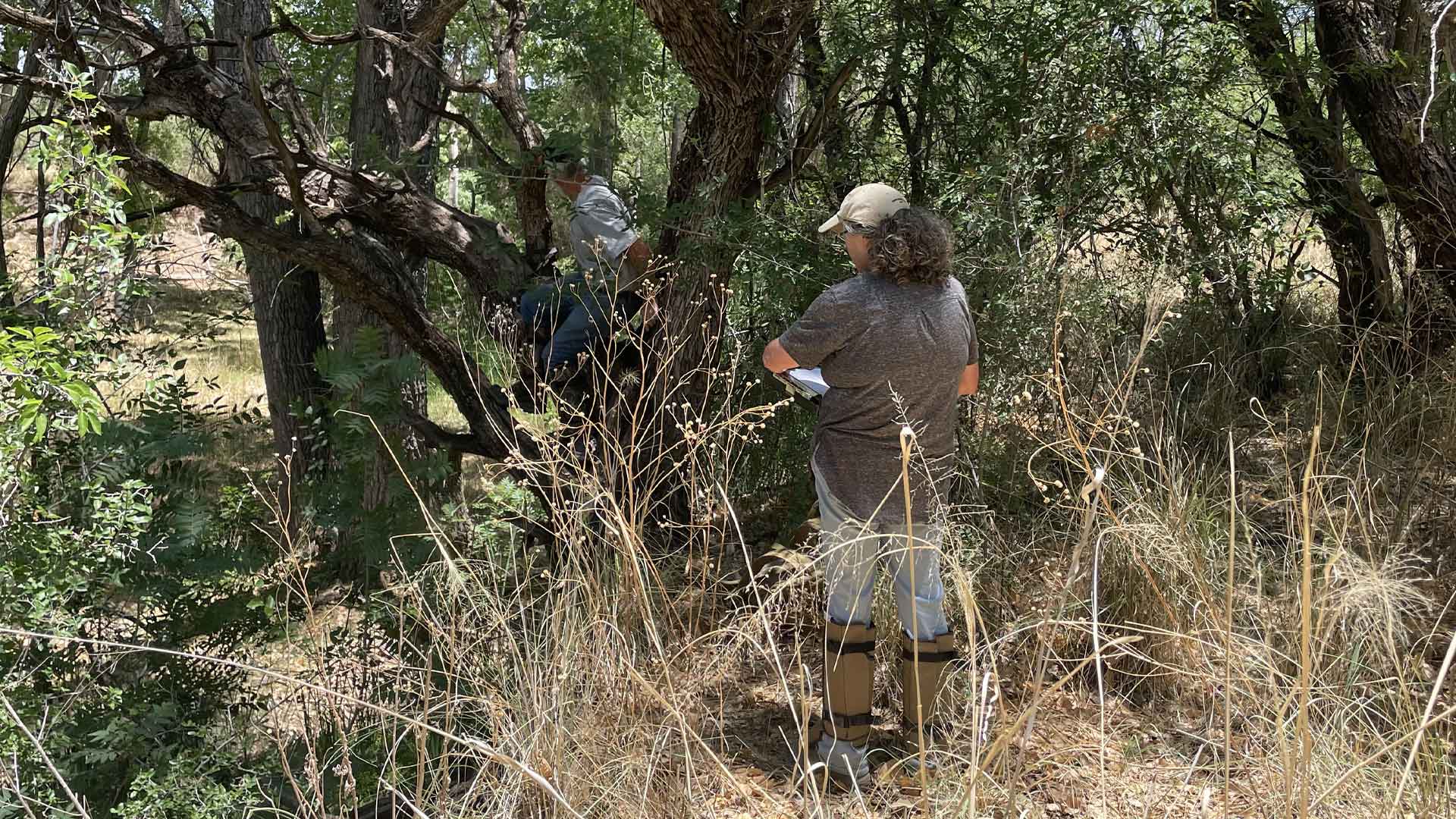 Ron Day and Cheryl Mollohan and are retired scientists who are contributing to firefly studies in Arizona by volunteering throughout the state. Here, they are mounting a camera on a tree in hopes of obtaining images of fireflies.
Ron Day and Cheryl Mollohan and are retired scientists who are contributing to firefly studies in Arizona by volunteering throughout the state. Here, they are mounting a camera on a tree in hopes of obtaining images of fireflies.
The information will be compiled in a data base and used to monitor populations and how to protect them.
"Last year, while we were looking, we saw three different Gould's turkey hens with their brood, and the poults were very small. It's not uncommon at all to see many species of wildlife here, and this is just indicative of the quality of this habitat. And that's why fireflies are good indicator species," Day says.
Rachel Laura is the deputy executive director for Friends of the Verde River, but she's also a doctoral student at the University of Arizona who is studying the insects as well.
Laura lives in Flagstaff with her family, but she drives hundreds of miles to Patagonia southeast of Tucson to learn more about her subject matter.
Among other reasons, she got involved in this research after seeing fireflies for the first time at age 25, attending a webinar about fireflies, and having conversations with Ron Day and other experts about the insects.
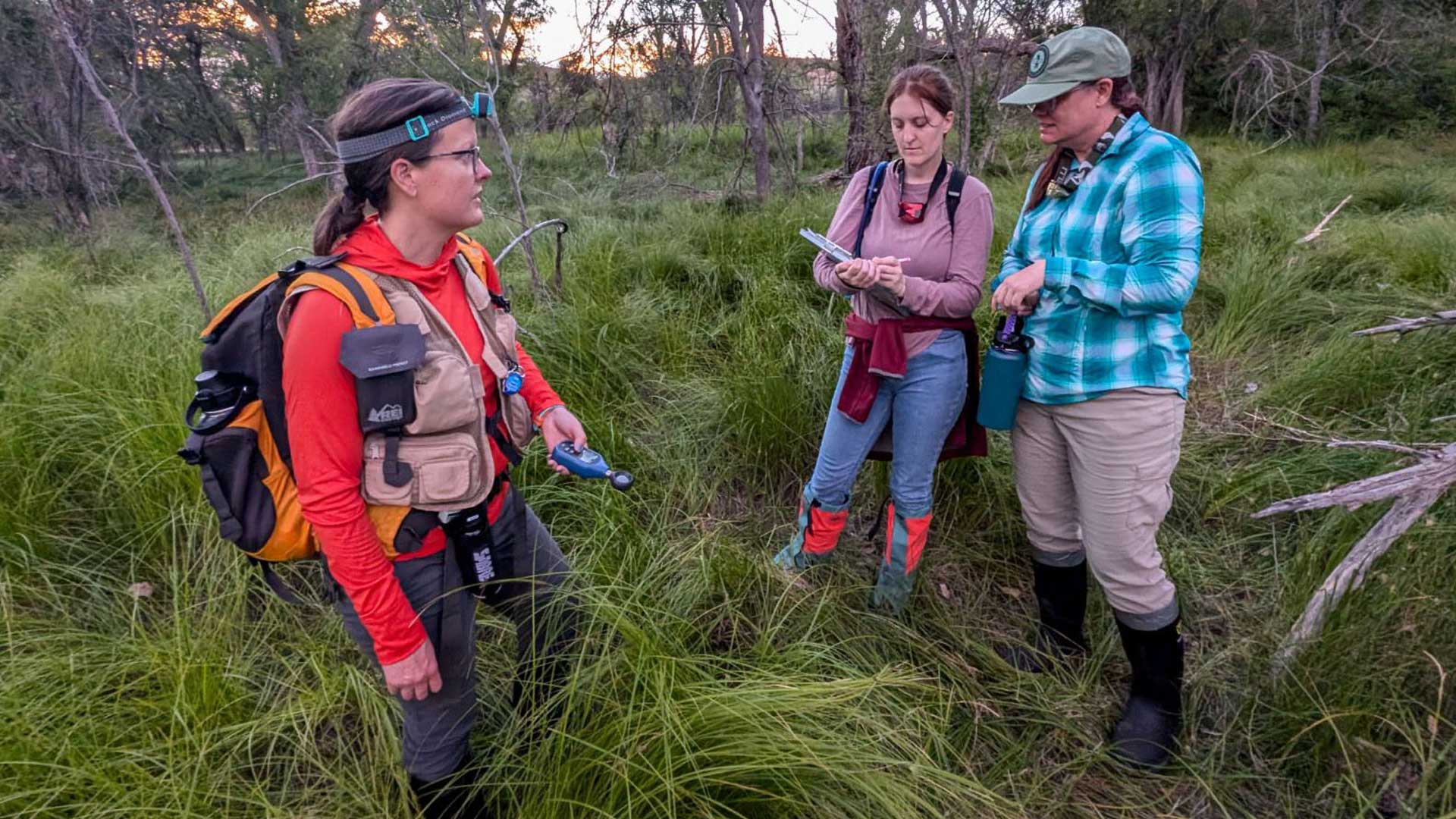 Rachel Laura (left) out in the field with a couple of volunteers conducting research on the Southwest Spring Firefly.
Rachel Laura (left) out in the field with a couple of volunteers conducting research on the Southwest Spring Firefly.
"Right now I'm studying the Southwest Spring Firefly, which is one of the native species here in Arizona. And it was petitioned to be listed under the Endangered Species Act. But we really only had one paper on the species, and that was from when it was described in 1982," Laura says.
"So my research is basically trying to fill in those knowledge gaps of where does the species occur, what habitat does it need to persist and identify some of the threats and maybe learn a little bit more about the ability of the species to disperse into new areas."
 Scientists Rachel Laura lives in Flagstaff but can travel hundreds of miles to places like Patagonia, AZ to study fireflies in this state.
Scientists Rachel Laura lives in Flagstaff but can travel hundreds of miles to places like Patagonia, AZ to study fireflies in this state.
All of the scientists say the lightning bugs are intriguing insects that warrant more study and protection. If you see them, they hope you look but don't touch because their populations are limited.
Also, avoid trampling or running around in their environment to protect their habitat.
"It's a great place to just set your chair up and just enjoy and don't feel like you have to catch one or handle one or or take one home or anything like that because they won't survive any of that," Mollohan adds.
If you'd like more information about the insects, you can search in sources such as the Xerces Society or Firefly Atlas(https://www.fireflyatlas.org/) where data are compiled and shared with other researchers from all around the country.
 Fireflies need moist / riparian areas, which are increasingly endangered, in order to complete their life cycles. Scientists say protecting such habitats is good for many species of wildlife, including fireflies.
Fireflies need moist / riparian areas, which are increasingly endangered, in order to complete their life cycles. Scientists say protecting such habitats is good for many species of wildlife, including fireflies.
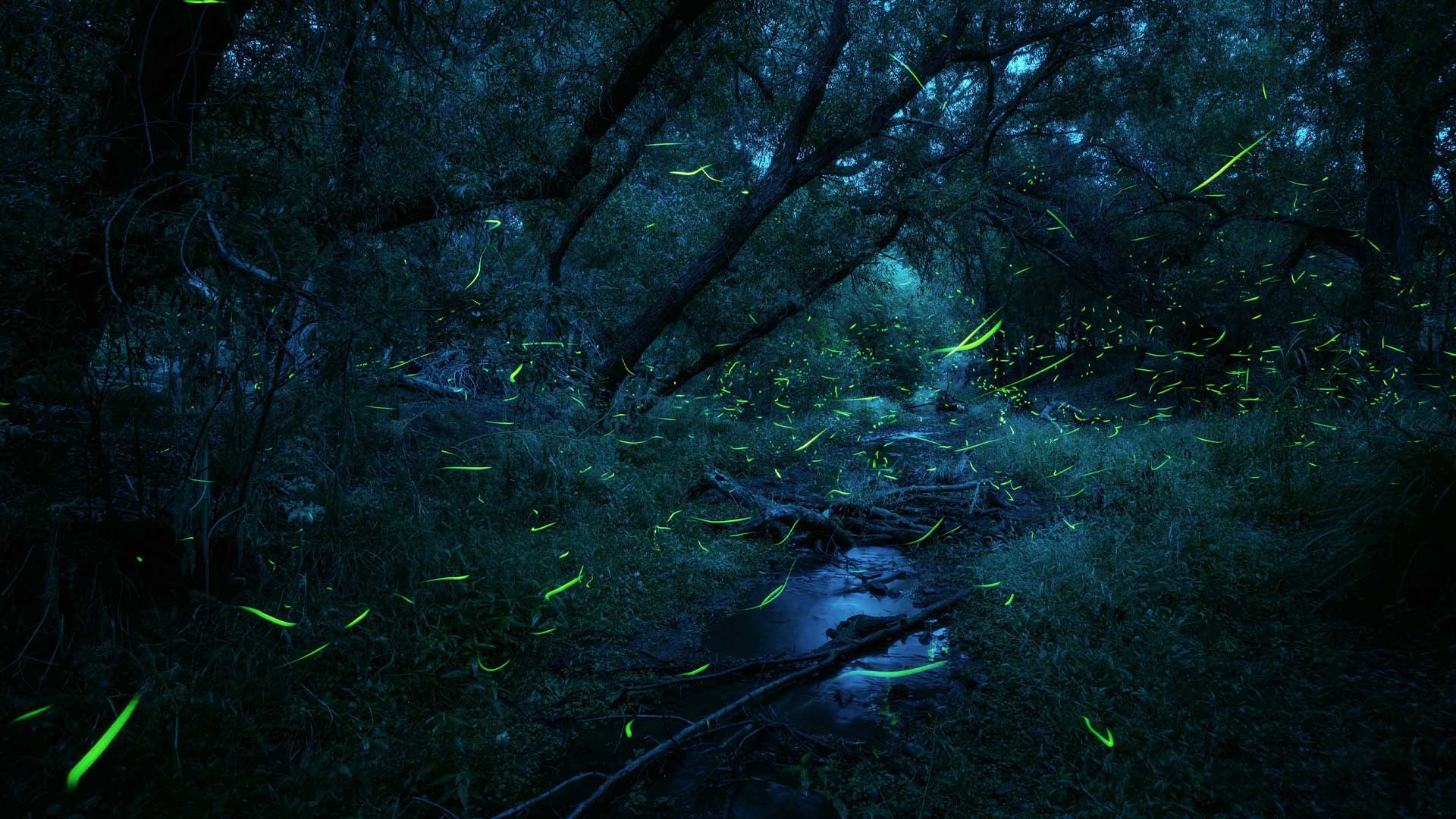 The Southwest Spring Firefly is one several species of these insects that live in Arizona.
The Southwest Spring Firefly is one several species of these insects that live in Arizona.

By submitting your comments, you hereby give AZPM the right to post your comments and potentially use them in any other form of media operated by this institution.